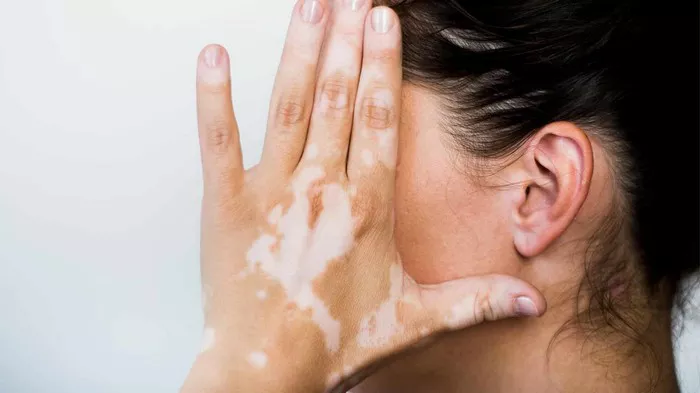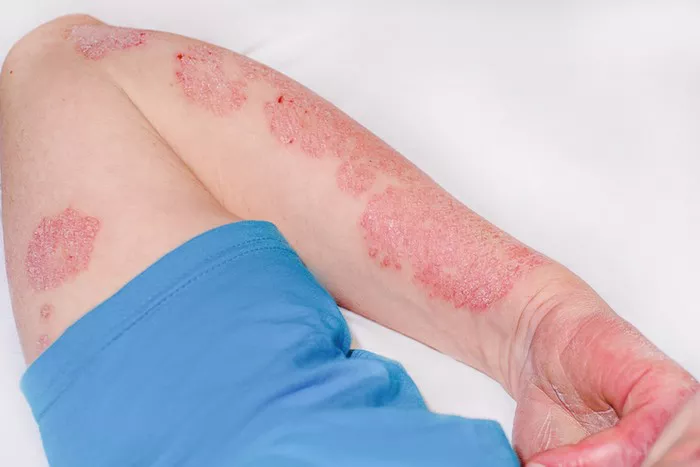Vitiligo is a skin condition that causes patches of skin to lose their color. This happens because the skin’s cells that produce pigment, known as melanocytes, are destroyed. As a result, areas of skin become lighter than the surrounding skin. Vitiligo can affect people of all skin types and colors. It can occur anywhere on the body, including the face, hands, and around the eyes and mouth.
Understanding Melanin
To understand vitiligo, it’s essential to know about melanin. Melanin is the pigment that gives color to our skin, hair, and eyes. It plays a significant role in protecting our skin from UV radiation. When melanocytes are damaged or destroyed, the production of melanin decreases, leading to lighter patches of skin.
Types of Vitiligo
There are two main types of vitiligo:
1. Non-segmental Vitiligo
This is the most common form. It usually appears symmetrically on both sides of the body. Non-segmental vitiligo can spread over time, affecting larger areas of skin.
2. Segmental Vitiligo
This type tends to appear in one area of the body and does not usually spread. It often occurs at a younger age and may last for a few years before stopping.
Symptoms of Vitiligo
The primary symptom of vitiligo is the appearance of light-colored patches on the skin. These patches can vary in size and may gradually spread. Other symptoms can include:
- Premature graying of hair on the scalp or body
- Changes in color of the inner lining of the mouth
- Loss of color in the retina (the part of the eye that senses light)
Who Gets Vitiligo?
Vitiligo can affect anyone, but certain factors may increase the risk. These include:
Age: It can start at any age but is often noticed in people between the ages of 10 and 30.
Family History: If someone in your family has vitiligo, your chances of developing it may increase.
Other Autoimmune Diseases: People with other autoimmune conditions, such as thyroid disease, type 1 diabetes, or rheumatoid arthritis, may be more likely to develop vitiligo.
Causes of Vitiligo
The exact cause of vitiligo is not fully understood, but several factors are believed to contribute to its development.
1. Autoimmune Response
Many experts believe that vitiligo is an autoimmune condition. In autoimmune diseases, the body’s immune system mistakenly attacks healthy cells. In the case of vitiligo, the immune system may target melanocytes, leading to their destruction.
2. Genetic Factors
Genetics play a role in vitiligo. Certain genes are associated with an increased risk of developing the condition. If you have a family history of vitiligo or other autoimmune diseases, you may be more likely to develop it.
3. Environmental Triggers
Certain environmental factors may trigger vitiligo in people who are genetically predisposed. These can include:
Sunburn: Severe sunburn can damage melanocytes and trigger vitiligo.
Stress: Physical or emotional stress may contribute to the onset of vitiligo.
Skin Trauma: Injuries to the skin, such as cuts, scrapes, or severe friction, can trigger the condition in some individuals.
4. Hormonal Changes
Hormonal changes in the body, such as those that occur during pregnancy or puberty, may also play a role in the onset of vitiligo. These changes can affect how the immune system functions.
5. Chemical Exposure
Exposure to certain chemicals, particularly in the workplace, may increase the risk of developing vitiligo. Chemicals such as phenolic compounds, often found in hair dyes and industrial products, have been linked to the condition.
Diagnosis of Vitiligo
Diagnosing vitiligo typically involves a physical examination of the skin. A dermatologist may ask about your medical history and family history of skin conditions. In some cases, a skin biopsy or blood tests may be necessary to rule out other conditions or confirm the diagnosis.
Living with Vitiligo
Living with vitiligo can be challenging for many people. It may affect self-esteem and confidence, particularly in social situations. Here are some ways to cope:
1. Education
Understanding vitiligo is crucial. The more you know about the condition, the better equipped you will be to manage it.
2. Support Groups
Joining a support group can provide emotional support and practical advice from others who are living with vitiligo. Sharing experiences can be comforting.
3. Cosmetic Solutions
Many people choose to use makeup or skin dyes to even out skin tone. These products can help cover light patches and boost confidence.
4. Treatment Options
While there is no cure for vitiligo, several treatment options are available to help manage the condition. These can include:
Topical Treatments: Creams that contain corticosteroids or calcineurin inhibitors can help restore skin color in some cases.
Light Therapy: Exposure to ultraviolet light under medical supervision can stimulate melanocyte activity and promote repigmentation.
Depigmentation: For individuals with extensive vitiligo, depigmenting the remaining pigmented skin can create a more uniform appearance.
5. Sun Protection
Since vitiligo affects skin pigmentation, it is essential to protect lighter areas from sunburn. Wearing sunscreen and protective clothing can help prevent sun damage.
Conclusion
Vitiligo is a complex condition that can significantly impact an individual’s life. While its exact cause remains unclear, a combination of genetic, environmental, and autoimmune factors appears to play a role. Understanding vitiligo, seeking support, and exploring treatment options can help individuals manage the condition and maintain a positive self-image. If you suspect you have vitiligo or have concerns about your skin, consulting with a healthcare professional is a crucial first step.
Related topics:


























